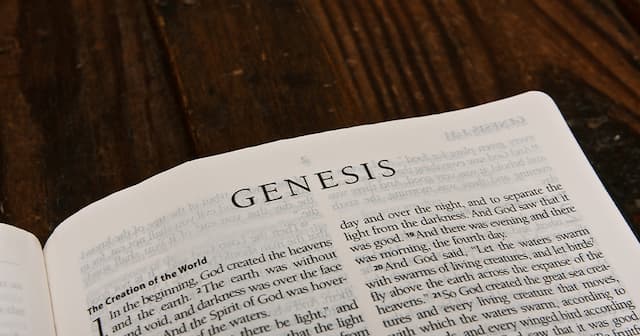God in the Hands of Giddy Sinners
Many charismatics today claim that the Great Awakening was a forerunner to their own movement, marked by the same emotional outbursts and experiences that dominate their worship. Moreover, as we’ve already seen, they argue that the movement was quenched by an emphasis on theological precision. But such arguments betray a woeful misunderstanding of the Great Awakening—a revival rooted in strong preaching and sound theology. Far from challenging orthodox theology, it reestablished the Puritan heritage of Calvinist orthodoxy and put a halt (at least temporarily) to the serious erosion of doctrinal clarity that was the hallmark of the age. The emotional displays began in response to the clear preaching of God’s Word.
Edwards, Whitefield, and all the other leading preachers of that era were known for the vividness and directness of their preaching. When they applied their plainness of speech, graphic imagery, and logical precision to the truths of Scripture—all under the Holy Spirit’s sovereign power—the impact on audiences was dramatic.
One of the earliest recorded incidents of congregational outcries, swooning, and weeping happened during the Sunday evening worship service at Enfield, Connecticut on July 8, 1741. Jonathan Edwards was the visiting preacher, and the text he preached from was Deuteronomy 32:35: “Vengeance is Mine, and retribution, in due time their foot will slip; for the day of their calamity is near, and the impending things are hastening upon them.” Edwards’s sermon that night has become the message for which he is most famous: “Sinners in the Hands of an Angry God.” Anyone who has ever read the text of that sermon knows it is as far from the don’t-worry-be-happy spirit of our age as it is possible to get.
Steven Williams attended the service that night. He recorded the event in his diary:
We went over to Enfield, where we met dear Mr. Edwards of New Haven, who preached a most awakening sermon from these words—Deuteronomy 32:35. And before the sermon was done, there was a great moaning and crying out through the whole house—“What shall I do to be saved?”; “Oh, I am going to hell!”; “Oh, what shall I do for Christ?” etc. So that the minister was obliged to desist. The shrieks and cries were piercing and amazing. After some time of waiting, the congregation were still, so that a prayer was made by Mr. W. And after that we descended from the pulpit and discoursed with the people, some in one place and some in another. And amazing and astonishing the power of God was seen, and several souls were hopefully wrought upon that night. And oh, the cheerfulness and pleasantness of their countenances that received comfort. Oh that God would strengthen and confirm! We sang a hymn and prayed and dismissed the assembly. [1]
Such emotional outbursts in the Great Awakening invariably happened in response to the messages preached. There were no random or irrational eruptions of raw passion. If there was weeping, it was provoked by genuine sorrow. If there was wailing, it reflected real terror of the Lord. If there was laughter, it was the expression of a joyful heart, not just empty, spontaneous hysterics.
At least that was the case until fanaticism seized the movement.
Clearly, to move from the Great Awakening to the laughing revival requires a quantum leap. The difference between the two movements is so pronounced that even secular observers have noticed. A London newspaper wrote,
The difference between the present movement and the revivals of the 18th century is that the latter were characterised by powerful preaching, a strong sense of self-loathing and of repentance, none of which is a feature of the Toronto Blessing or the charismatic movement from which it came. [2]
A Christian newspaper in England made a similar observation:
People are likening these things to those seen in Whitefield’s day, but the comparison seems hardly fitting as his followed the preaching of the Word when these seem to follow little more than a very shallow summary of “what we saw in Toronto.” [3]
Now contrast Steven Williams’s firsthand record of the Enfield incident with this eyewitness account of the laughing revival:
A lady wearing a dress is lying down on the ground seemingly writhing in agony and screaming. A man with a thick accent in a dark suit is standing over her barking orders while a crowd of people stand all around laughing. The lady appears to be possessed by a demon because her body jumps off the floor in an unnatural way. The man pushes her back down ordering her to “stay down” and “Let it bubble out your belly!” A woman with an armful of airline blankets covers her thighs to hide the view of her undergarments.
The lady continues to flop up and down for several minutes screaming hysterically. She shouts “Dear Jesus” and the man orders her not to pray but to submit to the power. She puts her hands over her face and continues laughing uncontrollably and the man proclaims “There it is! Now you got it.” The audience jumps up and down applauding while the man shouts “The bar is open. The bar is open. Drink deeply! Get drunk on the spirit!” [4]
Surely this is a far cry from “Sinners in the Hands of an Angry God.” Now God is in the hands of a giddy mob—or so the mob thinks. It is reminiscent of the scene at the foot of Sinai where the Israelites danced around a god of their own making (Exodus 32).
And that is the inevitable result whenever a religious movement allows feelings and emotional euphoria to be the final arbiter of any legitimate move of God. But the God of Scripture “is not a God of confusion” (1 Corinthians 14:33) nor is His Word an optional supplement to our religious experience. And we’ll consider those critical truths as we conclude this series next week.







